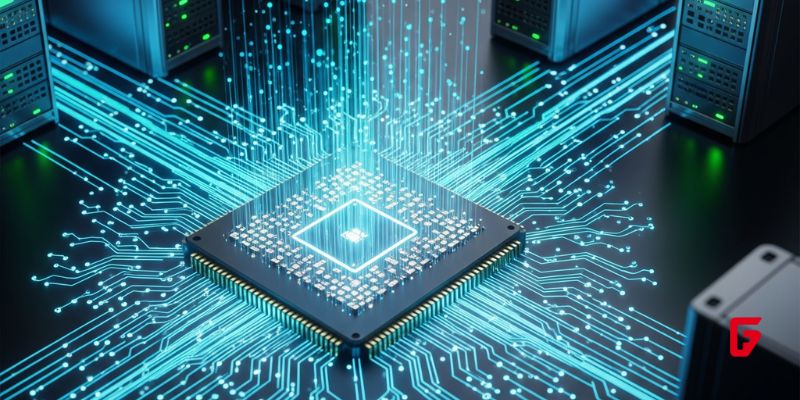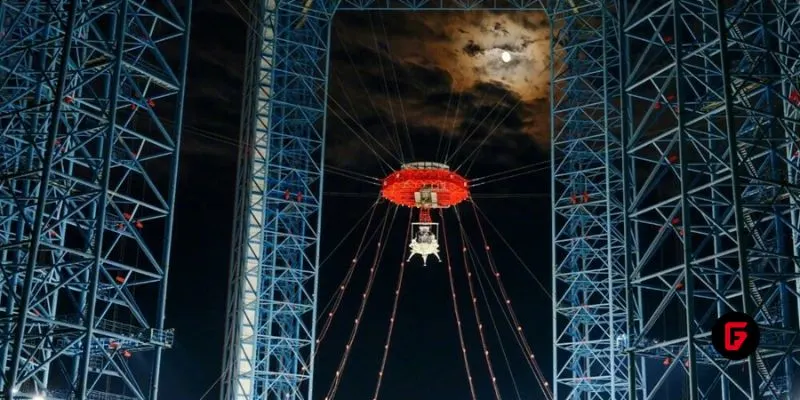The networking landscape for artificial intelligence (AI) and high-performance computing (HPC) just saw a major shakeup. Broadcom has unveiled the Tomahawk Ultra, a switch chip offering ultra-low latency and record throughput—aimed squarely at dethroning Nvidia’s dominance in the AI data center interconnect game.
Redefining High-Speed Networking for AI Clusters
Tomahawk Ultra delivers an impressive 250-nanosecond switch latency at a 51.2 Tbps throughput. This means data zips across servers and accelerators at a pace tailored for demanding AI model training and large-scale inference workloads—setting a new bar for Ethernet in HPC circles.
But the innovation isn’t only about speed. Broadcom’s engineers have engineered out traditional Ethernet bottlenecks, optimizing the protocol for AI’s unique needs:
Lossless network fabric: Features like Link Layer Retry (LLR) and Credit-Based Flow Control (CBFC) virtually eliminate dropped packets and enable reliable, congestion-free transfers.
Efficient data movement: The switch reduces Ethernet header overhead from 46 bytes to just 10 bytes, boosting efficiency especially when transferring millions of small packets, which is vital for AI clusters.
In-network collective operations: Common AI compute tasks like AllReduce, Broadcast, and AllGather are performed within the switch hardware itself, minimizing CPU/GPU load and expediting distributed training jobs.
Challenging Proprietary Protocols with Open Ethernet
One of the most relevant aspects of Tomahawk Ultra is its commitment to an open Ethernet ecosystem. Whereas competitors like Nvidia use proprietary protocols such as NVLink (limiting cross-vendor interoperability), Broadcom harnesses a new breed of Scale-Up Ethernet (SUE) optimized for HPC and AI workloads.
This approach brings several advantages:
Ecosystem compatibility: Scale-Up Ethernet can tie together a vast array of processors—Broadcom claims support for at least 1,024 accelerators per fabric, well above the 576 GPUs per cluster supported by Nvidia’s latest NVLink Switch.
Seamless upgrades: The chip is pin-compatible with the previous-generation Tomahawk 5, allowing data centers to upgrade without re-architecting hardware infrastructure.
Purpose-Built for Next-Gen Data Centers
The latest Tomahawk Ultra is fabricated on TSMC’s advanced process technology, representing a multi-year engineering initiative involving hundreds of experts. According to Broadcom, this chip is already being shipped and deployed into rapidly-scaling AI training clusters and supercomputing environments.
What Sets Tomahawk Ultra Apart?
Latency: 250 nanoseconds—a breakthrough for Ethernet in HPC.
Bandwidth: 51.2 Tbps, nearly double the throughput of Nvidia’s current NVLink switch offerings.
Packet handling: Up to 77 billion packets per second—even at minimum sizes—so AI networks can handle the demanding message rates thrown at them.
Advanced congestion control: Built-in mechanisms like forward error correction and flow control prevent packet loss, maintaining data integrity and performance under load.
Looking Ahead: An Evolving AI Network Landscape
With this release, Broadcom is signaling that Ethernet—long considered “good enough”—has now evolved into a formidable rival for proprietary AI networking protocols. Their approach doesn’t just challenge Nvidia’s networking stack; it also supports a broader move toward open, interoperable infrastructures in high-performance data centers.
For tech companies building the future of AI infrastructure, solutions like the Tomahawk Ultra are pushing the boundaries and redefining what’s possible for AI networking at scale.














